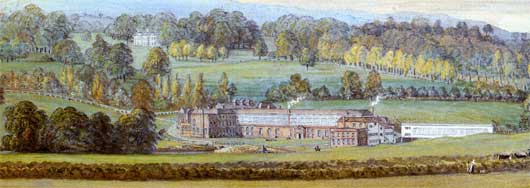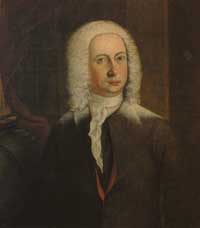Who were the Whatmans?
The Whatmans referred to here can be traced by direct descent from the 15th C. mainly domiciled in the southern part of the county of Kent, England. The family migrated gradually northwards, a branch reaching the outskirts of Maidstone early in the 18th C. establishing themselves in the village of Loose as Tanners. Apart from producing leather, tanyards were a source of gelatine for use as size in the paper industry. It is not surprising that a close relationship developed between the Harris family of papermakers who had a papermill in Loose and the Whatmans (for details see Vols. I & II).
The Elder James Whatman (b. 1702), tanner, learnt the basic features of papermaking as a boy in the Harris mill. In 1733 he built a papermill of his own situated on the River Len and installed his close friend, Richard Harris, as paper maker there. In 1736 Harris moved to Turkey Mill near Maidstone and further down the River Len; in 1738 he began pulling this much larger mill down in order to accommodate the equipment needed for the New Technology, a process that was to revolutionize the British Paper Industry (Vols. I & II). This work was unfinished when he died in 1739. Whatman took over in his place. Between 1740-1759, the year of his death, the Elder Whatman continued to develop Turkey Mill until it became the largest paper mill in the country, building up an unrivalled reputation for the quality of its products. It was during the last years of his life that Whatman invented a new species of paper, wove, a product that his son, the younger James, continued to develop.

Detail from Paul Sandby's painting of "Mr Whatman's Mill"

The Elder James Whatman